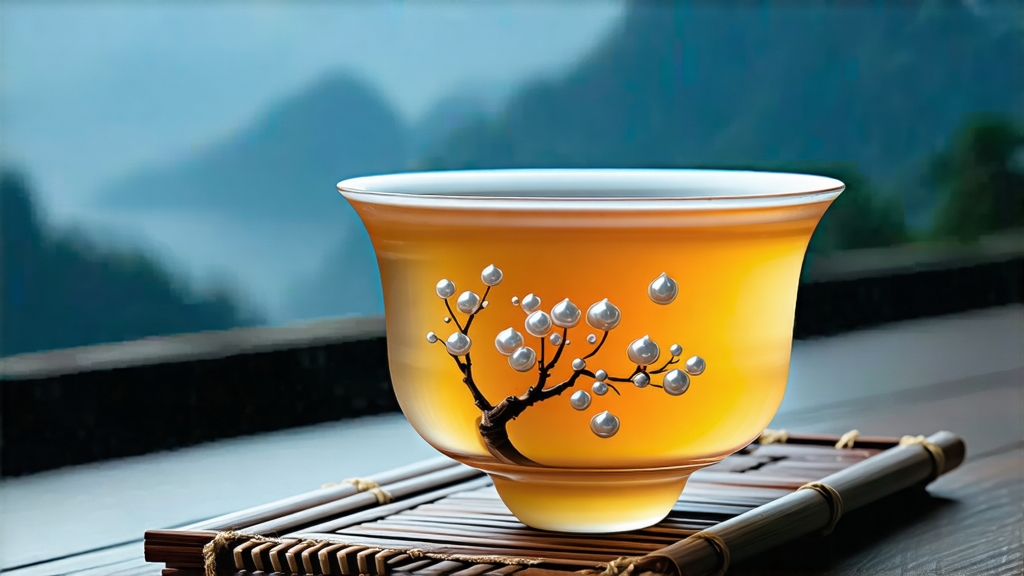
White tea is the least disturbed of all China’s six great tea families, and within that quiet realm Bai Hao Yin Zhen—literally “White-Hair Silver Needle”—sits on the throne. To the eye it looks like nothing more than a handful of pale, downy twigs; to the tongue it can feel like drinking chilled moonlight. International drinkers often meet white tea first through bagged blends or flavored bottlings, yet the original loose-leaf Silver Needle remains largely unknown outside specialist circles. This article invites you to step past the supermarket shelf and into the mist-cooled gardens of northern Fujian, where the simplest of processes creates one of the most nuanced beverages on earth.
-
A brief, almost weightless history
Song-dynasty emperor Huizong (1082-1135) wrote rapturously of “white buds among the tribute cakes,” but those early whites were pressed bricks, not the fluffy needles we know today. The modern form appears only in the late 1700s, when merchants around Taimu Mountain near Fuding began shipping loose, air-dried buds to Canton for export. Because the finished tea was almost the color of unprocessed leaf, dockworkers nicknamed it “white” to distinguish it from the dark, roasted Wuyi oolongs that shared the cargo holds. By 1891 Silver Needle was winning medals at international fairs in London and圣彼得堡, yet production remained tiny—barely a few hundred kilos a year—because only the unopened bud, picked for a two-week window in early spring, qualified. Today global demand has expanded, but true-origin Silver Needle is still measured in tonnes, not containers. -
Geography: why Fuding and Zhenghe taste like dawn
Chinese law restricts the geographical indication “Bai Hao Yin Zhen” to two counties: Fuding on the coast and Zhenghe slightly inland. Both sit just inside the subtropical belt, where the East China Sea sends nocturnal fogs rolling over granite ridges. Daytime temperatures hover around 20 °C in March, ideal for slow withering; nights drop to 12 °C, locking in fragrance. The local cultivars—Fuding Da Bai Hao and Zhenghe Da Bai—bear unusually thick trichomes, the silvery hairs that give the tea its name and its characteristic “downy” aroma reminiscent of artemisia and ripe melon. -
The harvest: one bud, zero leaves, infinite patience
Plucking begins when the tea bush awakens from winter dormancy, usually between March 15 and April 5. Only the single, unopened bud is taken; if the leaf has even begun to unfurl it becomes Bai Mu Dan (White Peony) instead. A skilled picker can gather 600 g of fresh buds per hour, yet 30 000 buds—an entire day’s work for one person—yield barely 500 g of finished tea. The buds must arrive at the factory within two hours; otherwise enzymatic browning will stain the pristine tips chestnut. -
Crafting Silver Needle: doing almost nothing, at exactly the right moment
Unlike green tea, white tea is never pan-fired or rolled. The traditional recipe has only two verbs: wither and dry. Yet within those verbs lie micro-decisions that separate sublime from mediocre.
Step 1: Outdoor withering
Buds are spread 2 cm thick on bamboo trays and left under morning shade. Ambient humidity must stay above 65 % so the cell walls lose moisture gradually; too dry and the buds curl violently, cracking the surface and turning the liquor harsh. Every 20 minutes a worker gently lifts and turns the leaf by hand, feeling for the slightest tackiness. After 4–6 hours the buds enter the “soft waist” stage—pliable enough to bend 90 ° without snapping.
Step 2: Indoor withering
Trays move into a corridor where temperature is held at 22–26 °C and airflow at 0.2 m s⁻¹. Here the tea rests up to 36 hours, during which enzymatic oxidation proceeds to about 5–7 %, just enough to round the edges. Masters gauge readiness by listening: when a handful of buds shaken together produces a muted, sandy rustle instead of a damp squeak, the moisture has fallen to roughly 20 %.
Step 3: Low-temperature drying
Modern factories use